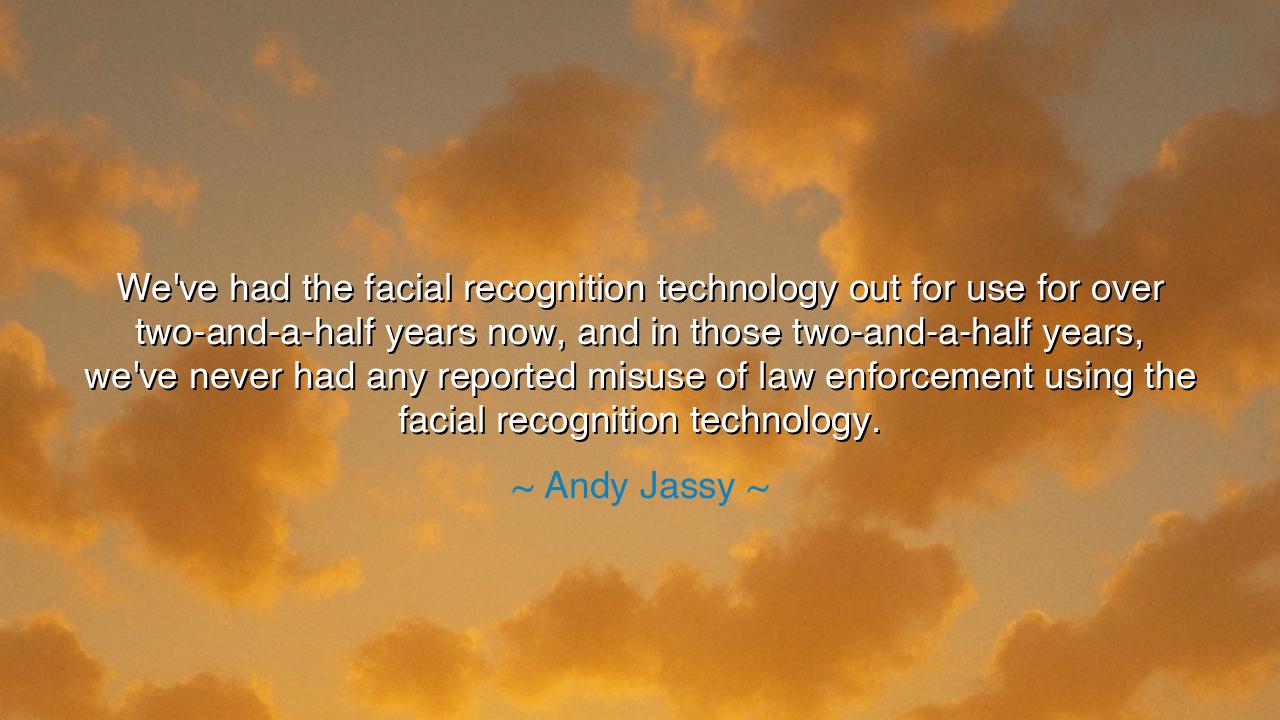
We've had the facial recognition technology out for use for over
We've had the facial recognition technology out for use for over two-and-a-half years now, and in those two-and-a-half years, we've never had any reported misuse of law enforcement using the facial recognition technology.






Andy Jassy, steward of one of the world’s most powerful companies, once proclaimed: “We've had the facial recognition technology out for use for over two-and-a-half years now, and in those two-and-a-half years, we've never had any reported misuse of law enforcement using the facial recognition technology.” In these words he sought to assure a watchful public that technology, often feared for its potential abuses, had thus far been wielded with restraint. Yet beneath his declaration lies a deeper meditation: whenever humanity fashions tools of great power, the question of trust and misuse arises as urgently as the tool itself.
The origin of this statement rests in the rising debates around surveillance and privacy in the early twenty-first century. Facial recognition technology, once the stuff of legend, became real and widespread, capable of identifying individuals in crowds, unlocking doors, and tracing movements with silent precision. Jassy, then a leader at Amazon, defended its deployment by declaring a record free of abuse in the hands of law enforcement. But even as he spoke, he was answering the larger unease of society: can such power ever be kept pure, or will its shadow eventually fall upon the innocent?
History offers sobering examples. When the Romans built roads across their empire, these were hailed as marvels of connection and trade. Yet the same roads that carried merchants also carried legions, enabling conquest and oppression. When Alfred Nobel discovered dynamite, it was meant for construction and mining, yet it became an instrument of war. The pattern is eternal: invention is born with promise, but its fate rests on how human hands choose to wield it. Jassy’s defense of facial recognition technology is but the modern echo of this age-old dilemma.
The heart of his words reveals a paradox. To say that no misuse has been “reported” is not to say none has occurred; it is to acknowledge the fragile line between perception and reality. Human beings often trust new powers in their infancy, when few yet know their potential. But history teaches us that true tests come not in the early years, but when temptation and pressure mount. Thus, Jassy’s claim of unblemished use can be read both as assurance and as warning: the absence of visible abuse must not lull us into complacency.
Yet there is also a noble hope in his declaration. For it points to the possibility that restraint and integrity may guide even the most powerful of tools. Just as the sword in the hand of a just king can defend rather than oppress, so too can facial recognition, if rightly governed, protect the vulnerable, find the lost, and deter harm. Technology itself is not evil; it is the mirror of human values. When leaders claim careful stewardship, they invite us to believe that innovation can walk hand-in-hand with responsibility.
The lesson here is clear: trust must always be matched with vigilance. Citizens must not reject technology outright, nor embrace it blindly. They must demand safeguards, transparency, and accountability. For only when power is watched by the people can it remain a servant rather than a master. Technology is a mighty river; left unchecked it can flood and destroy, but guided by channels of wisdom it can nourish and sustain.
Practical actions flow from this truth. Support policies that set clear boundaries for the use of surveillance. Encourage open dialogue between creators of technology, governments, and communities. Educate yourself and others about both the promises and perils of new tools. And above all, remember that the fate of any invention is not written in the invention itself, but in the choices of those who wield it.
Thus let Andy Jassy’s words be preserved not only as a defense but as a challenge: to ensure that technology remains a blessing and does not descend into curse. The record of restraint in its early years must inspire vigilance for the future. For the mightiest of tools test not only the limits of science, but the very soul of humanity.






AAdministratorAdministrator
Welcome, honored guests. Please leave a comment, we will respond soon